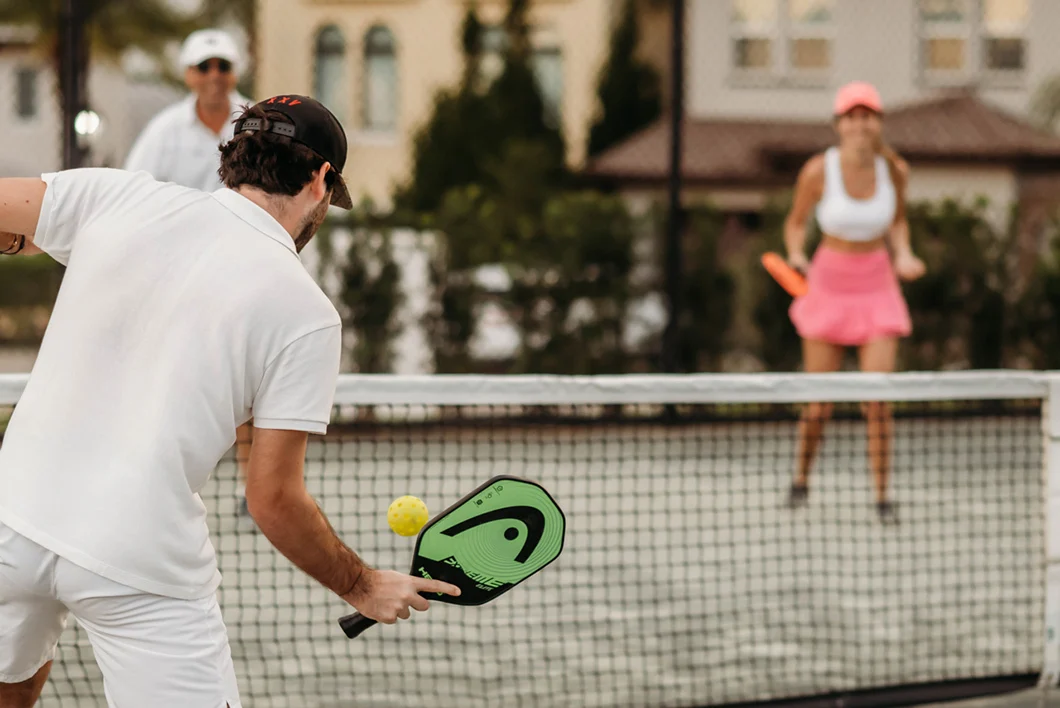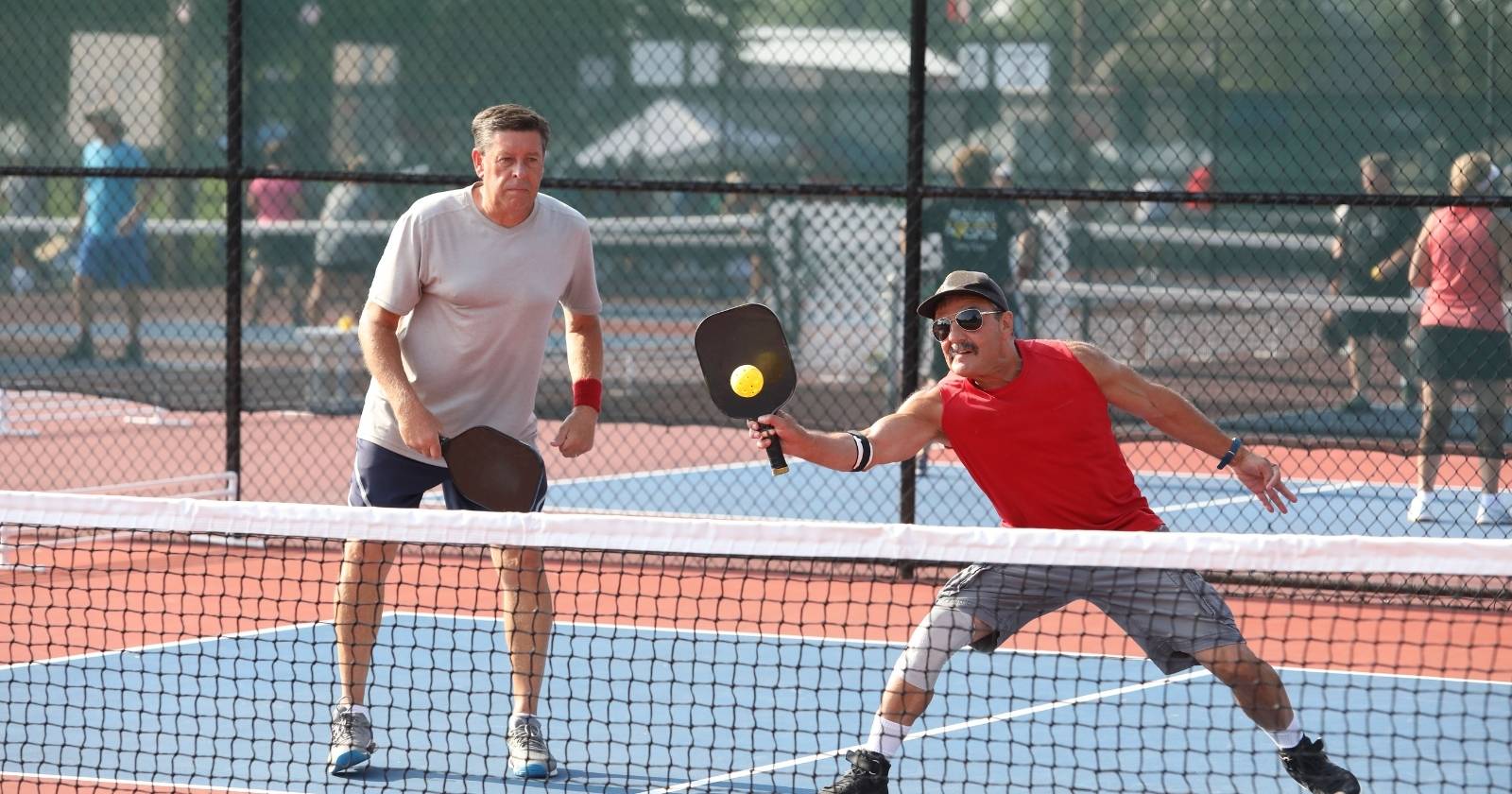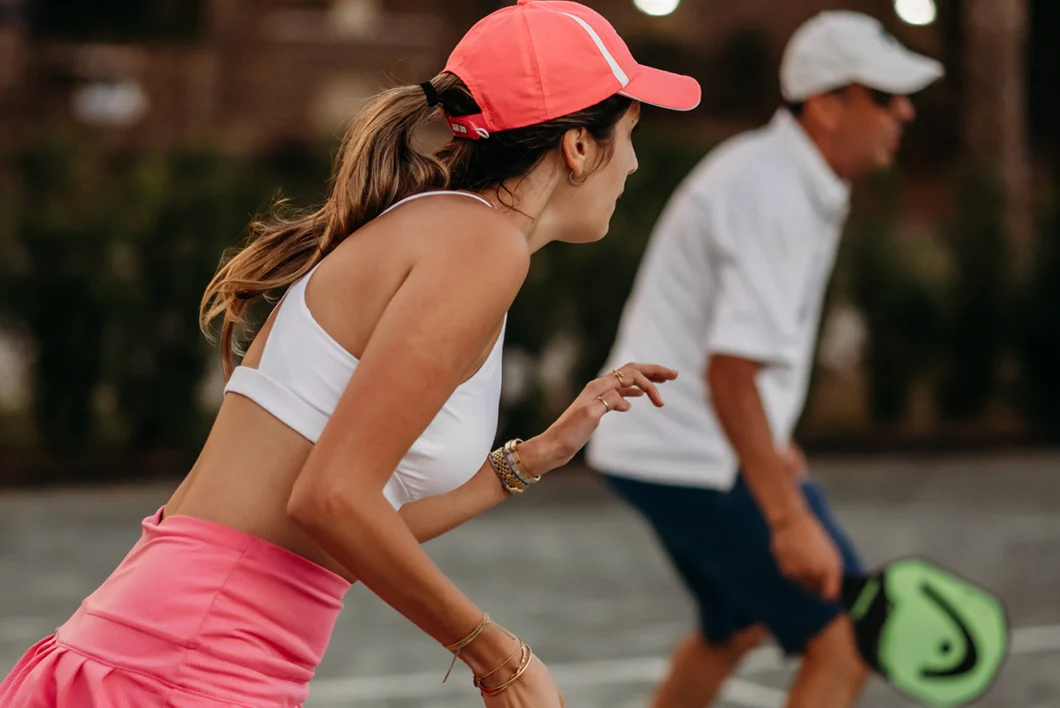Pickleball Strategy for Intermediate Players: Elevate Your Game to the Next Level
Pickleball has emerged as one of the fastest-growing sports in the world, captivating players of all ages with its unique blend of tennis, badminton, and ping pong. What began as a simple backyard game has transformed into a competitive sport, fostering a community that thrives on skill development and sportsmanship. As players progress from the beginner stage to the intermediate level, the focus often shifts from merely understanding the rules to mastering strategic gameplay. For intermediate players, who have grasped the fundamental mechanics, delving into strategic concepts becomes essential for enhancing performance and enjoying the game to its fullest. This article serves as a comprehensive guide to pickleball strategy for intermediate players, offering actionable insights to elevate your skills and improve your game.
Mastering the Fundamentals

Serving
Your serve sets the tone for the entire point, making it one of the most critical aspects of pickleball strategy. A consistent serve can be likened to a solid foundation upon which a house stands; it must be strong and stable. Focus on delivering serves that are not only consistent but also accurate aim for the corners, particularly targeting your opponent’s backhand. This can be achieved through various serving techniques such as flat serves, spin serves, slice serves, and kick serves. Each type has its strategic advantages and can keep your opponent guessing.
Choosing which serve to deploy is also essential, as it allows you to exploit an opponent’s weaknesses. For example, if your opponent struggles with high bounces, a kick serve may disrupt their rhythm, providing you an edge. Consistency in serving is not merely about repetition; it involves understanding your opponent’s game and adapting your serve to disrupt their tempo.
Returning
Upon receiving your opponent’s serve, your focus should shift to executing a solid return. A deep return creates immediate pressure, pushing your opponent to the back of the court and near their baseline. Ideally, you want to aim your return towards your opponent’s backhand, as this is often considered the weaker side for many players a tactic akin to attacking the Achilles’ heel of your opponent’s game.
Returns should also carefully consider the opponent’s positioning. If they are rushing the net, a well-placed deep return can force them back, creating an opportunity for you to take control of the point. Additionally, returning to the non-volley zone can set up quick volleys, turning defense into offense in the blink of an eye.
Third Shot
The critical third shot in pickleball can be compared to the moment when a chess player outmaneuvers their opponent; it sets the stage for subsequent plays. After the serve and the return, this third shot is where you can seize momentum. Options here include dinks, drives, drop shots, and lobs, each serving its purpose depending on the situation.
A well-executed dink can lure your opponent to the net, positioning them for an offensive strike, while a drive can put immediate pressure on their defense. Importantly, taking your time to assess the situation before committing to a third shot can lead to better shot selection and higher success rates. Mastering this aspect of play can significantly elevate your overall performance.
Strategic Play

Positioning
Being aware of your court positioning is vital in pickleball and can be the difference between winning and losing a game. Think of your positioning as the strategic placement of pieces on a chessboard each move influences the subsequent play. Practice adopting a “ready” position that enables you to react swiftly to your opponent’s shots.
Strategically, positioning at the baseline allows you to handle deep shots, while being closer to the kitchen line prepares you for volleys. It’s important to adapt your positioning based on your opponent’s style of play. For instance, if they favor strong overhead shots, positioning yourself more defensively may be prudent.
Shot Selection
Effective shot selection requires reading your opponent’s body language and anticipating their next move. This ability to predict plays is crucial; knowing when to attack aggressively and when to play defensively can swing the match in your favor. Incorporating a mix of shots can keep your opponent guessing, offering you the upper hand.
Employing the “soft game” is also an excellent strategy for maintaining control. Instead of solely relying on powerful smashes, utilize dinks and drops to manipulate the pace of the game. This varied shot selection not only showcases your versatility as a player but also exposes any weaknesses in your opponent’s defense.
Communication
In doubles play, clear communication with your partner is paramount. Much like the synchronicity found in a well-coordinated dance, coordinating your movements and shots can create seamless gameplay. Calling out shots is essential whether you are going for a ball or allowing your partner to take it, clear calls can prevent confusion and errors.
Additionally, understanding your partner’s strengths and tendencies can enhance your teaming strategy. For example, if one partner excels at net play, the other might adopt a more defensive stance, allowing for fluid transitions between offensive and defensive plays.
Read more: Pickleball Strategy for beginners
Advanced Strategies

Dinking
Dinking is an art form that requires finesse. This soft shot is not merely a defensive play; instead, it can be a strategic maneuver intended to control the pace of the game and create scoring opportunities. By mastering consistent dinks, you can maintain pressure on your opponent, forcing them to make mistakes.
Positioning yourself close to the net can allow for effective dinks that angulate the ball in a way that pulls your opponent out of position, thus opening up opportunities for more aggressive shots. Practicing different angles and touch will enhance your dinking ability and make you a more formidable player at the net.
Drop Shots
Drop shots are another effective tool at your disposal. When executed with precision, a drop shot can catch an opponent off-guard, especially if they are positioned far behind the baseline. Timing is crucial; launching the shot at the right moment can lead to an unanticipated scoring opportunity.
To use drop shots effectively, focus on refining your touch. This often involves adjusting your body position and paddle angle to achieve the desired effect. Consistency in executing drop shots can elevate your play and exploit your opponent’s vulnerabilities.
Lobbing
Lobs can serve as both an offensive and defensive strategy, depending on when and how they are used. A well-timed lob can shift the momentum of a rally, pushing your opponent back and creating an opportunity for an offensive follow-up shot. Nonetheless, careful judgment is required; an ill-timed lob can easily be countered by a powerful overhead.
Master the knack for reading situations where a lob might be beneficial and practice hitting them with power and accuracy. This strategy adds variety to your gameplay, making you unpredictable and difficult to defend against.
Read more: Advanced pickleball strategy: mastering the nuances for a competitive edge
Mental Game

Focus
Maintaining focus throughout the game is essential. Just as a tightrope walker steadies their balance, a pickleball player must center their thoughts to avoid distractions and execute shots effectively. Practicing mindfulness techniques can help you stay present and engaged during matches, contributing to a strong mental game.
One effective strategy is to set short-term goals for each game or point. This practice can shift your focus away from potential mishaps by redirecting your energy to small victories a major factor in controlling the mental aspects of the game.
Confidence
Believing in your abilities can significantly influence performance. Confidence acts as a multiplier of skill; when players believe in their capabilities, they play more aggressively and effectively. This often involves overcoming moments of self-doubt, acknowledging that every player has strengths to showcase.
Regular practice and celebrating small improvements can bolster your confidence. When faced with challenges, remind yourself of your accomplishments and the skills you’ve cultivated.
Adaptability
In pickleball, adaptability is a crucial skill. Opponents will not always play according to the script; being flexible and willing to adjust your strategy can turn the tide in your favor. Learning to assess your opponent’s play style and making real-time adjustments can position you for success.
Reflecting on previous games and analyzing what worked or what didn’t can help you grow and adapt. Embrace the learning process every match, win or lose, presents an opportunity to hone your skills.
Conclusion
Developing a strong understanding of pickleball strategies is essential for players looking to elevate their game. By mastering shot selection, court positioning, and tactical play, you can create a competitive edge and enhance your enjoyment of the game. Embrace the journey of practice and continuous learning after all, becoming a proficient player is not merely about winning; it’s about growing, improving, and enjoying the sport alongside your friends and community. Practice these pickleball strategy for intermediate players regularly and watch as your skills flourish on the court. Most importantly, remember to have fun, be patient, and keep pushing your limits. The best is yet to come!
